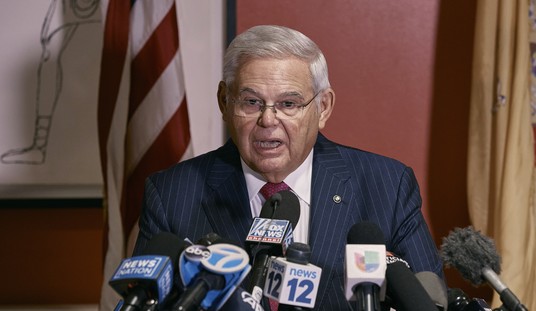In real life, there is no Batman. Many evil men plague our world, as we saw today in Colorado. These villains try to make up for their lack of good purpose by becoming something bigger through an evil, twisted act at their point of maximum exposure. But there is no Batman to stop them.
The third and final episode of Christopher Nolan’s Batman trilogy landed today, and I had planned for two weeks to see it on opening day and write a review for this space. Lunatics should get no veto on the rights or activities of the innocent, nor should their acts be used to justify restrictions on anyone else. The Dark Knight Rises’s opening day comes only once.
This film springs from the same comic book world that powered the first two and the whole Batman universe before them, but lands in a real world of political subtext and drama. Most notable is the so-called struggle between the 99% and the 1% and the occupations of various city parks associated with it. For a time that movement animated the political left in this country, before eventually turning into an urban Lord of the Flies and then petering out to irrelevance.
Mercenary Bane steps into the Batman world with this real world context behind him, announcing that he is liberating Gotham City from the 1%. Bruce Wayne is the .000000001 % which makes him the natural target. Catwoman is the amoral, opportunistic independent, only looking out for herself while warning Wayne that a storm is coming for him and Gotham’s other wealthy citizens.
But The Dark Knight Rises is not primarily a political film.
It is a moral and historical film, drawing most of its true inspiration from the French Revolution. It stands on the side of civilization against the rabble and those who would bring down Freedom either through intent or neglect. Though, in a nod to the Occupy movement, Bane does literally occupy the stock market to launch one of his schemes. The tattered American flags drooping in Bane’s Gotham attest to where he takes his “liberation.” Postmodern Hollywood may no longer believe in patriotism or even objective right and wrong, but it does know how to use them all to tell a good story.
Wayne has gone as off the grid as an internationally famous billionaire can for eight years, leaving rumors that he has become disfigured or gone mad. He only re-emerges because a mysterious thief forces him to, but he returns with a death wish from having lost so much. The world he saved still regards the tainted Harvey Dent as its unfallen hero, and its cowled crusader as the monster who killed him. Like Winston Churchill after World War II, he has been cast aside. Bane strides the stage as a modern Robespierre armed with the latest weaponry, with no apparent hero left to challenge him while he “liberates” the city as only a true madman can. As the story progresses, we find out that in some ways Bane is a mirror image of Batman, with the wicked self-righteousness of Osama bin Laden and Darth Vader. He takes his justice cues directly from the French Committee of Public Safety, and sits a fellow villain on the throne to rule for life or exile for the presumptively guilty. The Occupy movement might have gone in that direction too, but thankfully it never had a Bane to will it to power.
The third and final film in the Nolan Batman trilogy is the most hyped, but least predictable, of the three. While Bane lacks Joker’s wit and gift for misdirection, he makes up for it with cunning and brute force. The Dark Knight Rises is a five-star masterpiece despite one or two holes in the plot. The basic storylines go somewhat as expected, particularly if you are really up on your Batman lore, but once the opening exposition is done with, the action and twists come quickly with perfect pace. Anne Hathaway’s Catwoman is the best that has ever been put on screen by far, smouldering one second, playacting victim the next, landing on her feet from one disaster to another, some of them of her making, some not. Joseph Gordon-Levitt shines as the everyman cop who, as the disaster unfolds, rises to become an extraordinarily ordinary hero. Christian Bale’s Batman defines the character.
http://www.youtube.com/watch?v=kqF8lcKTLw0
But during several crucial moments of the film, reality almost takes over: There is no Batman. Just ordinary citizens and police officers and military trying to cope with a world gone insane. These moments, rather than the gadgetry and detective work of the hero who is equal parts ninja, master spy and master inventor, are what make The Dark Knight Rises the best film of the trilogy and the best comic book film yet made. The danger to Bruce Wayne’s life and to the lives of 12 million Gothamites gets as real as a movie can. The Dark Knight’s fall comes hard and is viscerally painful to watch. Recovery does not come quickly. Evil thrives for a while.
It is when Batman is off screen that the spectacle takes second place to the real story. It becomes heroic to scratch a bat figure on the pavement. The absence of the super hero produces the kind of ordinary heroism that runs armed crooks out of an internet cafe. We see a few of these acts on screen, but many more in our daily lives. Heroes wearing camouflage stop villains every day across the world. The faux Joker in Aurora, Colorado, was eventually stopped by everyday heroes wearing blue, people who could have gone anywhere and done anything, as Selina Kyle says at one point to Bruce Wayne, but chose to return and do good. Whatever the cost.
As Harvey Dent fell, our real world knights may fall from time to time. But that is not the end of the story. There are millions more knights out there, waiting for their moment to rise.
***
Related at PJ Lifestyle:










Join the conversation as a VIP Member